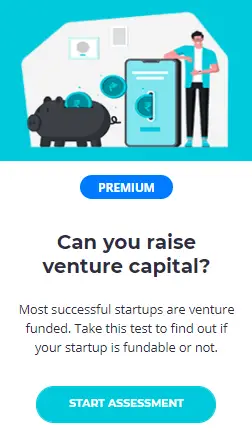What’s your startup exit strategy?
Building a successful startup is an incredible journey, but it’s important to have a clear vision of where you want to end up. An exit strategy is like the final destination on your startup’s road map.
It’s never too early to think about how you might eventually exit your company. Having a well-thought-out exit plan from the very beginning can help you make better decisions along the way.
So, let’s dive in and explore the different exit options available to you and what you need to consider when planning your startup’s exit.
Why Having an Exit Strategy Matters
Think of an exit strategy as your startup’s endgame. It’s the ultimate goal you’re working towards, whether it’s a successful acquisition, an IPO, or something else entirely.
Having a well-defined exit strategy matters for several reasons:
- It helps you make better decisions. When you know where you want to end up, it’s easier to chart the course and make strategic decisions that align with your goals.
- It keeps you focused. Building a startup is a rollercoaster ride, and it’s easy to get distracted. An exit strategy serves as a guiding light, keeping you focused on what truly matters.
- It attracts investors. Investors want to know that you have a plan for maximizing their returns. A solid exit strategy demonstrates that you’re thinking ahead and increases your chances of securing funding.
- It prepares you for the future. Whether you plan to stay involved with the company or move on to new ventures, having an exit strategy ensures you’re prepared for what comes next.
Investors put money into a startup in large part because they expect to get more money out of it in an exit. No investor goes into a startup investment expecting it to be the next Google or Facebook—those are mere pipe dreams. The realistic scenario for most successful startups is that they get acquired.
So, let’s explore some of the most common exit options for startups.
Common Exit Options for Startups
Initial Public Offering (IPO)
An Initial Public Offering (IPO) is the holy grail for many startup founders. It’s the process of taking your company public, offering shares to investors on a stock exchange.
Going public comes with several advantages:
- Liquidity: An IPO provides liquidity for founders, investors, and early employees, allowing them to cash out some or all of their equity.
- Raised capital: An IPO can raise significant capital for the company, fueling future growth and expansion.
- Increased visibility: Going public often brings heightened media attention and brand recognition, which can be beneficial for customer acquisition and recruiting top talent.
However, the IPO process is complex, expensive, and time-consuming. It requires extensive regulatory compliance, financial disclosures, and a dedicated team of lawyers, accountants, and investment bankers.
IPOs are the most spectacular exit. But spectacular barely begins to describe how difficult and unlikely a successful IPO is.
Realistically, only a tiny fraction of startups ever make it to an IPO. It’s often seen as a more viable option for mature, profitable companies with a proven track record and significant growth potential.
Acquisition
For many startups, being acquired by a larger company is the most likely and desirable exit strategy. Acquisitions can take various forms, such as:
- Cash acquisition: The acquirer buys the startup outright for cash, providing immediate liquidity for founders and investors.
- Stock acquisition: The acquirer pays for the startup with its own stock, essentially merging the two companies.
- Asset acquisition: The acquirer purchases specific assets (e.g., technology, intellectual property, user base) from the startup.
Acquisitions are attractive for several reasons:
- Immediate liquidity: Founders and investors can cash out their equity, either partially or in full.
- Access to resources: The acquired startup gains access to the acquirer’s resources, such as capital, infrastructure, and distribution channels.
- Strategic fit: If the startup’s product or service complements the acquirer’s offerings, the acquisition can create synergies and drive growth.
However, acquisitions can also come with downsides, such as loss of control, potential layoffs, and cultural clashes.
Most acquisitions don’t create much value. That’s not the way to think about them. An acquisition is simply a way for a big company to hire all the employees of a startup at once.
Management Buyout (MBO)
In a management buyout (MBO), the company’s existing management team acquires a controlling interest in the business from the current owners or investors.
MBOs can be an attractive option for founders who want to retain control of their company and its future direction. However, they often require significant capital and may involve complex negotiations with investors or other stakeholders.
Asset Sale
Sometimes, startups choose to sell off specific assets, such as a product line, intellectual property, or user base, rather than the entire company.
Asset sales can be a viable option when:
- The startup is struggling and unable to find a buyer for the entire business.
- The startup’s assets (e.g., technology, user base) are more valuable than the company itself.
- The founders want to pivot or wind down the business while realizing some value from their efforts.
While asset sales may not provide the same level of liquidity as other exit options, they can still generate returns for founders and investors.
Factors to Consider When Planning Your Exit
When planning your startup’s exit strategy, there are several key factors to consider:
- Timing: Timing is everything when it comes to exits. You’ll want to consider factors such as market conditions, company growth, and investor expectations.
- Valuation: Understanding the true value of your startup is crucial for negotiating a favorable exit. This involves analyzing factors like revenue, profitability, growth potential, and market position.
- Team dynamics: Exits can be emotional and complex, especially when multiple founders and investors are involved. Clear communication and alignment on the exit strategy are essential.
- Future plans: Think about your personal goals and aspirations. Do you want to continue being involved with the company post-exit, or are you ready to move on to new ventures?
- Tax implications: Different exit options can have vastly different tax implications. Consult with financial and legal advisors to understand the potential tax consequences of your exit strategy.
No battle plan survives contact with the enemy. And a startup’s exit strategy is a lot like a battle plan.
Remember, your exit strategy is not set in stone. As your startup evolves and circumstances change, be prepared to adapt and adjust your plans accordingly.
When is the Right Time to Exit?
Determining the right time to exit is one of the most challenging decisions startup founders face. There’s no one-size-fits-all answer, as the timing will depend on various factors specific to your company and personal goals.
Here are some signs that it might be the right time to consider an exit:
- You’ve achieved your initial goals: If you’ve accomplished what you set out to do with your startup, and the growth trajectory is plateauing, it might be time to explore exit options.
- Market conditions are favorable: Pay attention to market trends, industry consolidation, and potential acquirers’ interests. If conditions align favorably, it could be an opportune time for an exit.
- You’re facing intense competition: If your startup is struggling to keep up with well-funded competitors, an exit (e.g., acquisition) might be a strategic move.
- Personal circumstances: Sometimes, personal factors like burnout, health issues, or a desire to pursue new interests can drive the decision to exit.
Remember, timing is critical. Exiting too early could mean leaving money on the table while waiting too long could result in missed opportunities or a decline in valuation.
Pick a good market. That’s more important than the idea itself. When you have a good idea for a valuable startup, don’t discard it just because you think you’ll look like a fool. Nor should you cling to an idea you’ve fallen out of love with, simply because you don’t want to admit you were mistaken.
TL;DR
- Having an exit strategy is crucial for startup founders as it helps guide decision-making, attracts investors, and prepares you for the future.
- Common exit options include IPOs, acquisitions, management buyouts, and asset sales, each with its own pros and cons.
- Key factors to consider when planning your exit include timing, valuation, team dynamics, future plans, and tax implications.
- Determining the right time to exit is a complex decision influenced by various factors, such as achieving initial goals, market conditions, competition, and personal circumstances.
- Flexibility and adaptability are essential, as your exit strategy may need to evolve as your startup grows and circumstances change.
FAQ
Q: When should I start thinking about an exit strategy?
A: It’s never too early to start thinking about an exit strategy. Ideally, you should have a general plan in mind from the very beginning, even before launching your startup. However, your exit strategy may evolve and become more concrete as your business grows and matures.
Q: Is an IPO the ultimate goal for all startups?
A: No, an IPO is not the ultimate goal for all startups. While going public is a dream for many founders, it’s an extremely complex and challenging process and only a tiny fraction of startups ever achieve it. For most startups, a more realistic and desirable exit strategy is being acquired by a larger company.
Q: Can I exit my startup without selling it?
A: Yes, there are alternative exit options that don’t necessarily involve selling your entire company. For example, you could pursue a management buyout, where the existing management team acquires a controlling interest, or an asset sale, where you sell off specific assets like intellectual property or a product line.
Q: How do I determine the right valuation for my startup during an exit?
A: Determining an accurate valuation for your startup is crucial during an exit process. It involves analyzing factors like revenue, profitability, growth potential, market position, and industry comparables. It’s advisable to consult with experienced advisors, such as investment bankers or valuation experts, to ensure you’re negotiating from a position of strength.
Q: What if my exit strategy changes over time?
A: It’s perfectly normal for your exit strategy to evolve as your startup grows and circumstances change. Your initial plan might need to be adjusted based on market conditions, competition, team dynamics, or personal goals. Flexibility and adaptability are key when it comes to exit strategies.
Q: Can I plan for multiple exit options simultaneously?
A: Absolutely. It’s advisable to have multiple exit options in mind and to continuously assess their viability as your startup progresses. This ensures that you’re prepared for various scenarios and can pivot your strategy as needed.
Q: How important is it to align with co-founders and investors on the exit strategy?
A: Aligning with co-founders and investors on your exit strategy is crucial. Clear communication and consensus on the endgame can prevent conflicts and misaligned expectations down the road. It’s essential to have these discussions early on and revisit them regularly as your startup evolves.
Remember, building a successful startup is an incredible journey, but having a well-thought-out exit strategy can help you navigate the challenges and maximize the rewards when it’s time to move on to your next adventure.






